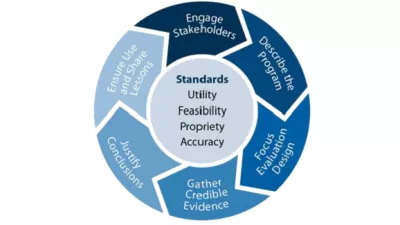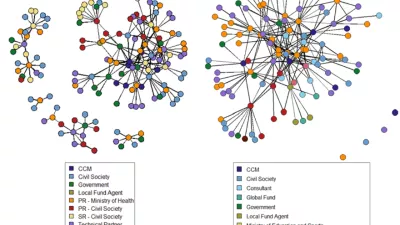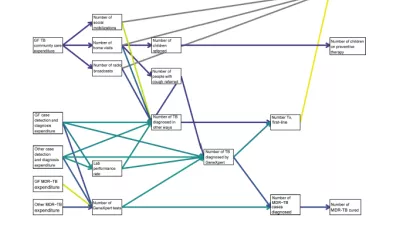The Global Fund
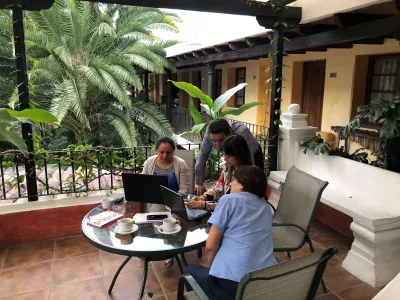
The Prospective Country Evaluation (PCE) was an independent evaluation of the Global Fund commissioned by the Global Fund’s Technical Evaluation Reference Group (TERG) from 2017 to 2021. The PCE was designed to evaluate how Global Fund policies and processes play out in country in real time and to provide high quality, actionable, timely information to national program implementers and Global Fund policymakers around HIV, TB, and malaria.
Generally, the PCE consisted of three major evaluative components: process evaluation, resource tracking, and impact evaluation. Each component itself was composed of several distinct methodologies. The three methodological components, and by extension the analyses that compose them, were designed to allow for triangulation of evidence across a range of evaluation topics, with each component contributing complementary information that helps answer evaluation questions more holistically.
Read a fact sheet about the PCE
Evaluation components
Process evaluation
The primary function of process evaluation was to understand the experience of countries in applying for and implementing Global Fund investments. The process evaluation incorporates a variety of methods and tools for data collection, analysis, and interpretation that are best aligned to each evaluation question. These might include key informant interviews, case studies, systems thinking approaches (theories of change, root cause analysis, causal loop diagrams) and process tracking (process maps, document review, and non-participant meeting observation).
Resource tracking
Resource tracking includes analyses to assess topics such as resource allocation, absorption, co-financing, and reprogramming, and serves as a pivotal component in understanding the mechanisms connecting Global Fund inputs to impact.
- Allocation analysis explores the distribution of resources across service delivery areas and geographic areas (within country) to understand the amount of Global Fund resources that have been dedicated to various purposes.
- Absorption analysis examines the difference between budget and expenditure over time, by service delivery area as well as geographically, to measure the extent and correlates of and understand constraints to absorption.
- Co-financing analysis explores changes in government health expenditure and the extent to which they coincide with Global Fund grants.
- Reprogramming analysis tracks changes in budgeting and expenditure over the course of grant-making and implementation.
Resource tracking analyses are used as much as possible to objectively complement related process evaluation findings, as well as inform impact evaluation.
Impact evaluation
The impact evaluation is composed of rigorous measurement of health indicators and linkages between resources and outputs. Using data triangulation techniques and geospatial analyses, the impact evaluation measures an array of health system outputs, intervention coverage indicators and burden of disease metrics at the subnational level (where possible) and temporally. Combining these with resource tracking analyses, the impact evaluation will measure gaps in intervention coverage and the extent to which resources appear to be allocated accordingly. The impact evaluation will prospectively facilitate use of data to ensure alignment of resources to needs (e.g., burden of disease, risk) including by geography and risk group. Additionally, the impact assessment will identify opportunities to strengthen strategic information systems, especially around data quality improvement and data use and the corresponding human capacity to implement these activities.
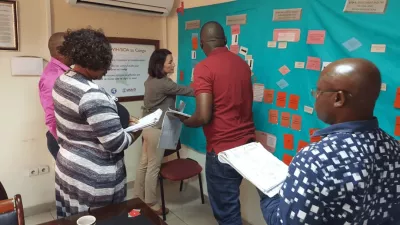
Funding and partner organizations
IHME and PATH worked closely with partners in the Democratic Republic of the Congo (PATH-DRC), Guatemala (CIESAR), Senegal (ISED), Uganda (IDRC) to lead the PCE in these countries. The Euro Health Group (EHG), University of California San Francisco (UCSF), and Itad worked with teams in Cambodia, Mozambique Myanmar, and Sudan to lead the PCE in these countries.
The PCE Evaluation team collaborated with and harnessed the expertise of numerous distinguished organizations to carry out this work for the eight countries.
Global evaluation partners:
- Euro Health Group (EHG)
- Johns Hopkins University (JHU)
- PATH
- University of California San Francisco (UCSF)
Country evaluation partners:
- Cambodia: Angkor Research and Consulting (ARC)
- Democratic Republic of the Congo: PATH Country Office in DRC
- Guatemala: Centro de Investigación Epidemiológica en Salud Sexual y Reproductiva (CIESAR)
- Mozambique: Instituto Nacionale de Saude (INS) and Universidade Eduardo Mondlane (UEM)
- Myanmar: Myanmar Knowledge Management Foundation (MKMF)
- Senegal: Université Cheikh Anta Diop (UCAD) and Institut de Santé et Développement (ISED)
- Sudan: Blue Nile National Institute for Communicable Diseases
- Uganda: Infectious Diseases Research Collaboration (IDRC)
Results
Findings and reports
Qualitative data and associated instruments were developed by other partners within the PCE. Results from the key informant interviews and focus groups can be found within the final reports.
Democratic Republic of the Congo
English
- Global Fund Prospective Country Evaluation: Democratic Republic of the Congo 2020-2021 Annual Report
- Global Fund Prospective Country Evaluation: Democratic Republic of the Congo 2021 Extension Report
- Global Fund Prospective Country Evaluation: 2019-2020 DRC Annual country report
- Global Fund Prospective Country Evaluation: Democratic Republic of the Congo 2019 Annual Report
- Global Fund Prospective Country Evaluation: Democratic Republic of the Congo 2018 Annual Report
- Global Fund Prospective Country Evaluation: DRC Report on Partnership in the Global Fund Application Cycle
Français
- Évaluation prospective de pays République Démocratique du Congo Rapport Annuel De Pays 2020-2021
- Évaluation prospective de pays République Démocratique du Congo Rapport D'extension 2020-2021
- Évaluation prospective de pays République Démocratique du Congo Rapport Annuel De Pays 2019-2020
- Fonds Mondial – Évaluation prospective de pays: Synthèse des conclusions 2018 - RDC
- L'évaluation prospective pays : République Démocratique du Congo Rapport Annuel Pays 2019
- L'évaluation prospective pays : République Démocratique du Congo Rapport Annuel Pays 2018
Guatemala
English
- Guatemala PCE 2020-2021 Annual Report
- Guatemala PCE 2021 Extension Report
- Global Fund Prospective Country Evaluation: Guatemala 2018-2019 Annual Report
- Global Fund Prospective Country Evaluation: Guatemala 2018 Annual Report
Español
- Evaluación Prospectiva de País Guatemala: Informe Anual de País 2020-2021
- Evaluación Prospectiva de País Guatemala: Informe de Extensión 2021
- Evaluación Prospectiva de País (EPP) del Fondo Mundial: Síntesis de Hallazgos del 2018
- Evaluación Prospectiva de País Guatemala: Informe Anual de País 2018
Uganda
- Uganda PCE 2020-2021 Annual Report
- Uganda PCE 2021 Extension Report
- Uganda PCE 2019-2020 Annual Report
- Global Fund PCE: Uganda 2019 Annual Report
- Global Fund PCE: 2018 Uganda and Synthesis Findings
- Global Fund Prospective Country Evaluation: Uganda 2018 Annual Report
- Global Fund PCE: Uganda Partnership Brief
Senegal
English
- Senegal PCE 2020-2021 Annual Report
- Senegal PCE 2021 Extension Report
- Senegal PCE annual report 2019-20
Français
- Évaluation prospective pays Sénégal Rapport Annuel 2020-2021
- Évaluation prospective pays Sénégal Rapport D'extension 2021
- Évaluation prospective pays Sénégal Rapport Annuel 2020
Cross-Country
- 2021 Cross-Country Synthesis Findings
- 2020 Cross-Country Synthesis Findings
- 2019 Cross-Country Synthesis Findings
- 2018 Cross-Country Synthesis Findings
- 2018 Cross-Country Synthesis Findings Presentation

